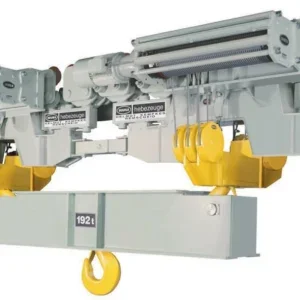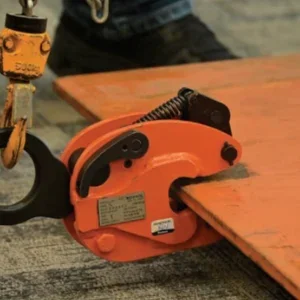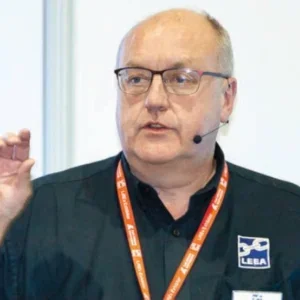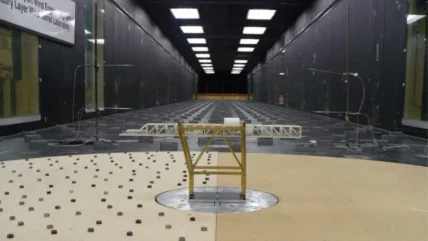
Casper, Phillips & Associates (CP&A) is inviting both trainee and experienced structural engineers to explore the opportunities in the crane industry, a field they may not have considered before. Working with cranes involves a multidisciplinary approach and structural engineers are essential in ensuring that the structure is strong enough for its service class. Mechanical engineers are responsible for designing the power transmission system, while electrical engineers handle the controls and power systems.
It is common for these roles intersect; for example, mechanical engineers may also be trained in both control theory and the strength of materials, allowing for greater flexibility and collaboration. “There is a lot of potential in this industry for structural engineers. Cranes are complex structures and require a lot of interesting analysis,” says Richard Phillips, mechanical engineer at CP&A.
Mechanical engineers are increasingly drawn to the crane industry – and for good reason. Automated cranes function much like large-scale robots, and robotics is a rapidly evolving and exciting field within mechanical engineering. While kinetic architecture – such as moving stadium roofs and drawbridges – also captures mechanical engineers’ interest, cranes continue to attract a significant portion of this professional talent. Consider the complexity involved in deploying a floating crane capable of lifting 3,500 metric tonnes – or nearly eight million pounds. Container cranes, often as prominent on coastal skylines as buildings and bridges, are a vital part of the infrastructure but are frequently overlooked. CP&A provides a broad range of services, including specification, design, manufacturing review, modification and accident investigation. Therefore, it is positioned to recognise a growing concern in the industry: the shortage of structural engineers, a critical specialisation within civil engineering.
Take the crane bridge
“There is high competition for structural engineers,” said Phillips. “But the crane industry shouldn’t be overlooked. Cranes can be located in hurricane zones and high seismic zones; this means you get to practice and develop both of these skills. Cranes are often built at a manufacturing plant then transported to the installation site. For container cranes, they are often shipped on vessels in potentially rough seas. Analysing a structure that is traveling across an ocean is not something every engineer gets to do.”
Phillips emphasised that engineers who aspire to work on bridges, or who already do, are particularly well-suited to careers in crane engineering. After all, a crane boom acts like a bridge, allowing the trolley to travel across it to pick up containers from a vessel and deliver them to their destination. Even in overhead crane systems, part of the structure is commonly referred to as the ‘bridge’, where the trolley moves back and forth while handling loads.
Just like bridge engineering, working with cranes offers the potential to move people and their careers forward. Phillips added: “There is a lot of opportunity for travel in the crane industry. Cranes are located all around the world and, as world-class engineers, our services are in demand globally. We currently have ongoing projects in Washington, California, Massachusetts, Delaware, New York and Georgia. We also have projects in Indonesia, Canada, Germany and Argentina. There is a consistent need for new ship-toshore cranes, even as vessel sizes increase. The cranes need to be taller and have larger cantilevers.”
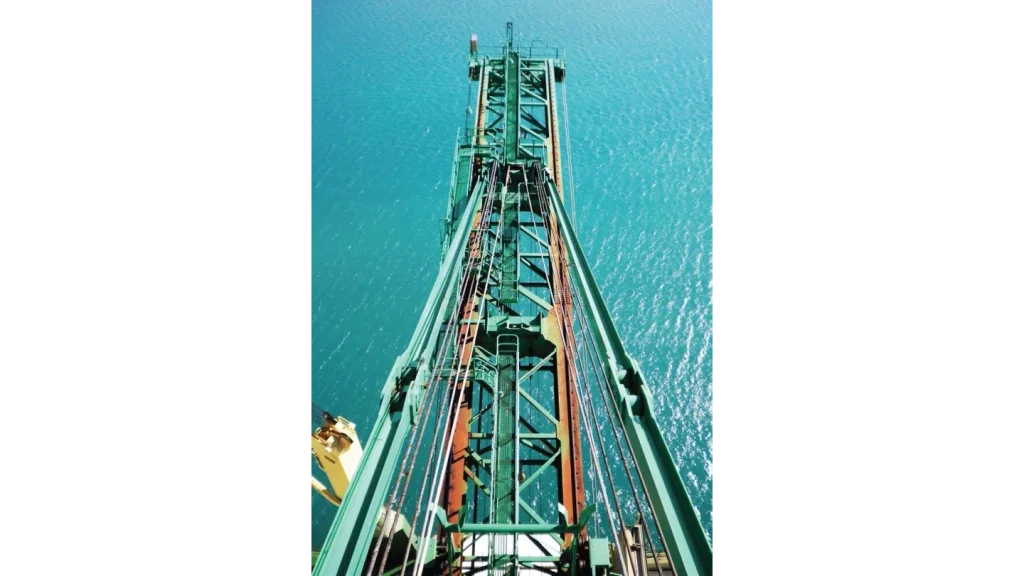
There are also strong parallels between cranes and stadiums, though there are far more cranes being built than retractable stadium roofs. Like cranes, mobile stadium roofs require complex rail systems and specialists who can calculate the loads associated with the movement of large structures. This includes accounting for inertial effects of acceleration and deceleration. Because these systems undergo many motion cycles, fatigue analysis becomes a critical aspect of the engineering process. Integrating such motion systems also require collaboration with mechanical and electrical engineers.
The potential for engineering innovation in the crane industry is vast – something that becomes increasingly clear amid the ongoing shortage of civil engineers. CP&A has been at the forefront of advanced analysis methods, utilising nonlinear time history analysis (NLTHA) for both research and engineering applications since 1991. CP&A’s crane base anti-seismic isolation system (BASIS) is designed for ship-to-shore gantry cranes. Based on NLTHA, BASIS is capable of protecting the main structure of a crane even during high-intensity, contingency-level earthquakes.
“These are very useful analysis tools to evaluate non-building structures that do not behave like buildings. Crane structures are unique, and the typical structural codes were not written with cranes in mind. This can result in interesting clauses applying that require application of advanced analysis techniques, such as non-linear time history.
“The genesis of the BASIS system was based on our experience with the seismic upgrade of Boeing Everett; after studying the problem we discovered friction dampers were the best solution,” said Phillips.
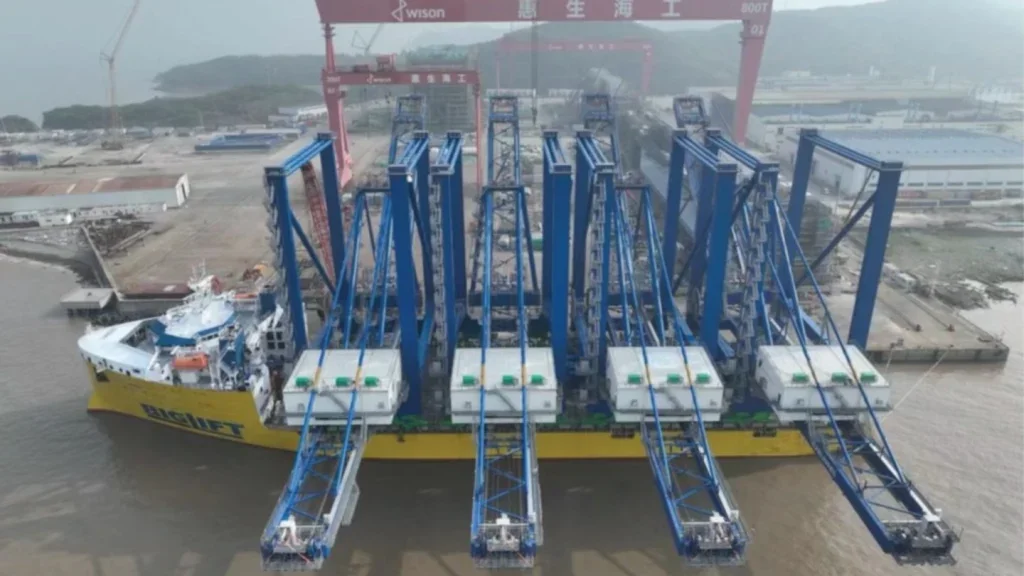
“When you use dampers of any kind, this will create a non-linear response so typical seismic design procedures, such as a response spectrum based on the soil class and periods of vibration, are not always appropriate. This is where non-linear time history comes into play. These are called performance-based design procedures.”
Lifting awareness
This years’ Global Lifting Awareness Day (GLAD) will place a stronger focus on education than ever before as it returns for its sixth edition on 12 June.
Driven by the Lifting Equipment Engineers Association (LEEA) and its partner organisations, the day has become a widely recognised event. Manufacturers, suppliers, and end users come together to share content that promotes safe, high-quality load lifting practices. Social media posts, videos, articles and live events will once again be unified under the hashtag #GLAD2025.
“I think most people see cranes as something necessary to build important structures, but the focus stays on the end product and not the process to get there. The GLAD movement gives us a chance to help showcase what makes the crane industry so interesting. And we have much to build on. The entry level hires we’ve brought on board are as well prepared as any generation, and they take to our mentoring system. It’s just difficult to find the right engineers,” said Phillips.
“From the outside looking in, it appears that the other industries are doing a better job at attracting students. Anecdotally, we aren’t seeing as many civil engineering graduates who focused on structures. Computer science and AI are generating a lot of interest. Environmental and water resources management are both subdisciplines under the civil engineering umbrella that tend to be attracting more students.”
For any trainee or experienced structural engineers who feels inspired by this to explore the crane industry, the first step is learning the language of cranes – the rest will come naturally. While crane design has its own specific requirements and objectives, the underlying principles remain the same. The physics don’t change, and the core approach to structural design is more alike than different when compared to other industries.
“The pinnacle of each engineer’s career is very personal, and each engineer will have a unique experience,” said Phillips. “Most engineers take great pride in handing over a custom crane design to a client. For me, that has been the biggest source of accomplishment and a very real symbol of the impact we make as engineers.
“Sometimes, I have to take a minute and let it really sink in what I am designing. AI and computers are great at refining solutions to problems that have been previously solved,” explained Phillips. “When you design a custom crane, you are solving a new problem that potentially hasn’t been solved before. Computer programmes are great at doing the routine busy work for us so that we can spend more of our budget on the cuttingedge. Most projects are unique when we get involved.”



